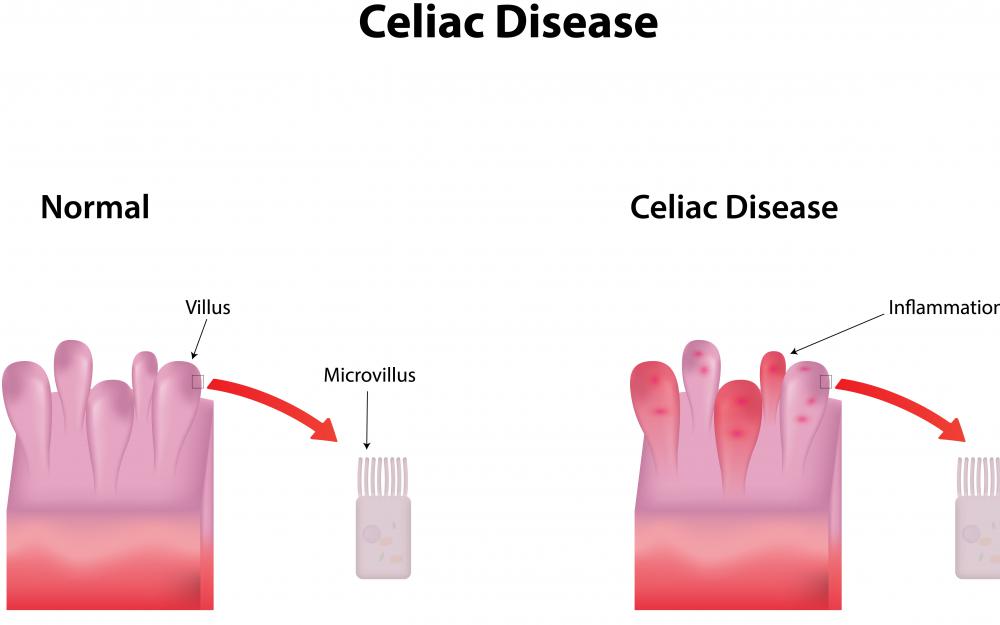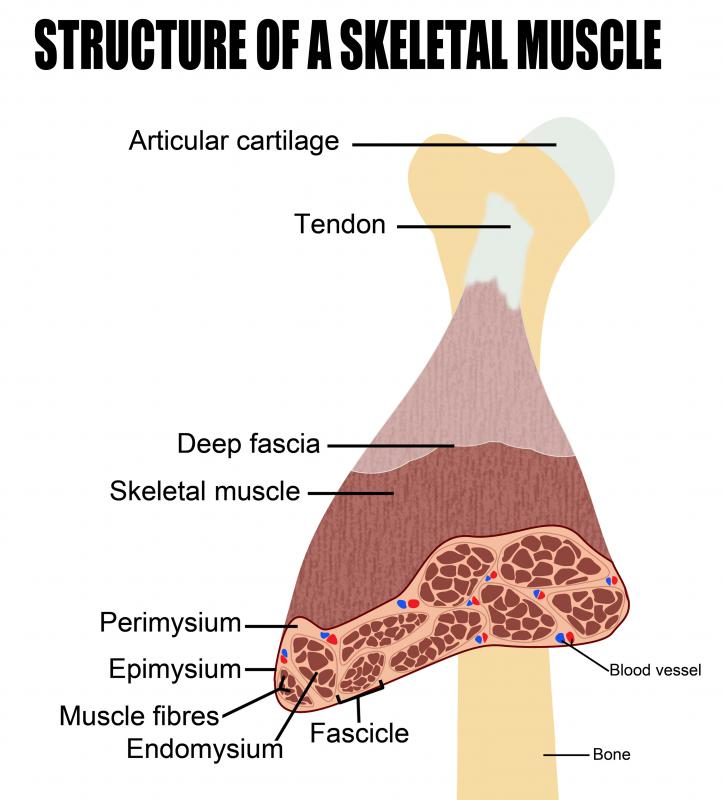At TheHealthBoard, we're committed to delivering accurate, trustworthy information. Our expert-authored content is rigorously fact-checked and sourced from credible authorities. Discover how we uphold the highest standards in providing you with reliable knowledge.
What is the Endomysium?
The endomysium is a thin, delicate layer of connective tissue that surrounds the individual muscle fibers within the human body. The word endomysium literally means within the muscle. This structure primarily consists of reticular fibers, which are made up of a protein called collagen. Various types of vessels and other structures are also present in this covering.
Capillaries are among the blood vessel types found in the endomysium. These are the smallest blood vessels in the body, and as such, are very fragile. Capillaries are connected to the larger blood vessels known as arteries and veins and create a mesh-like network of vessels to connect the arteries and veins to various tissues and organs. Capillaries also help the body to get rid of excess heat when necessary.

Nerves are also present in the endomysium. Nerves are fiber bundles containing neurons, cells that carry electrical signals throughout the body. Nerves are responsible for sending both sensory and motor information to various areas of the body. Lymphatics, components of the body's immune system, are also contained within the endomysium.
The endomysium is sometimes referred to as the cardiac skeleton. However, this term is also sometimes used for the combination of the perimysium and the endomysium. The perimysium is a layer of connective tissue that is responsible for grouping muscle fibers together into bundles referred to as fascicles.

Endomysial fibrosis is a medical condition that may affect the tissue surrounding the muscle fibers. This covering is usually very thin in nature. However, with endomysial fibrosis, the connective tissue grows much thicker than normal. This condition is particularly prevalent in muscular dystrophy, a disease of the muscles that causes the muscles to become very weak.
Mitochondrial dysfunction is another condition that can affect the sheath covering the muscle fibers. Extreme muscle weakness can occur when the endomysium has been affected. Other forms of this disorder can cause certain forms of epilepsy or other more serious health conditions.
A protein known as the endomysial antibody is often used to test for celiac disease. This is a condition in which the patient's body cannot properly process gluten, a type of protein found in wheat, barley, and rye. Celiac disease is considered to be an autoimmune disease and is often hereditary. Common symptoms after consuming gluten often include abdominal pain, gas, and nausea. Other digestive issues are common and can mimic other conditions, making proper medical diagnosis important.
AS FEATURED ON:
AS FEATURED ON:












Discussion Comments
I have been told the test for celiac disease is not very complicated, but sometimes takes a long time to be considered because the symptoms are so similar to many others. That makes more sense to me now, seeing how delicate the endomysium seems to be.
Post your comments